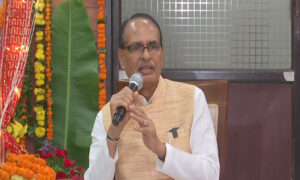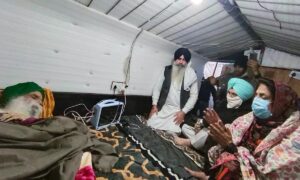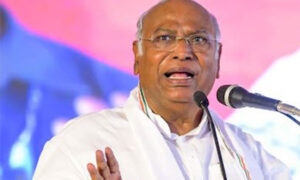
Picture : ANI / X
With farmer’s protest 2.0, experts and public are forced to think why is it that farmers in the North, especially Punjab, Haryana, Western Uttar Pradesh are disgruntled with the government policies unlike their southern farmer community? For, the policies remain the same across the country. So is the protest politically motivated or there is some other hidden agenda?
Thousands of farmers on tractors and trucks are marching towards the Indian capital, New Delhi, to push the government to address their demands, including guaranteed prices for their produce. They are demanding legal guarantees of a minimum support price (MSP), which acts as a safety net for the farming community; waivers of farm loans; and a rollback of policies they say hurt farmers. Other demands include better sugar cane prices, a pension of Rs 10,000 a month for every farmer above 60 years of age, stronger action against the accused in the Lakhimpur Kheri incident and grant of land in Delhi for a memorial for the “martyrs” of the earlier farmers protest. Farmers are agitating against the planned privatisation of the electricity sector. State governments currently provide subsidised electricity to farmers, which helps bring input costs down.
The march comes months before a general election, which the BJP is expected to win. Since the farmers comprise two-thirds of India’s 1.4 billion people, accounting for nearly a fifth of the country’s gross domestic product, according to government figures. Hence, farmers form an influential voting bloc, and parties try to gain their support. As it seeks the farmers’ votes, the Modi government recently conferred the nation’s highest civilian honour Bharat Ratna on former Prime Minister and agriculture leader Chaudhury Charan Singh and MS Swaminathan, a pioneer of the agricultural revolution in the 1960s and ’70s.
However, this time little enthusiasm is shown by Khaps, the jat community organisations which had done massive mobilisation during earlier protests. Acting proactively, a government delegation has held negotiations with the protesting farmers, but the talks have not yielded results. The Samyukta Kisan Morcha (SKM), Kisan Mazdoor Morcha (KMM) and Kisan Mazdoor Sangharsh Committee are spearheading the protests. The organisers said more than 200 farm unions are participating in the March to Delhi.
Authorities too, are taking no chances and have banned large gatherings in Delhi and suspended internet services in several Haryana districts ahead of the March to Delhi, called by farmers from Punjab and Haryana along with several other northern states. Police in Haryana state, which borders Delhi, fired tear gas on farmers to prevent them from reaching the capital, which has been converted into a fortress, reviving memories of the 16-month-long agitation by the farmers two years ago. Multiple entry points to the capital have been sealed by erecting barriers of barbed wire, spikes and cement blocks.
Nevertheless, it’s the common man which suffers the most with such protest. Spending long hours in traffic jams, detouring to reach the destination on time and worse, the medical emergencies, all add up to the mental agony of the public. People are now questioning the rationale behind such mindless protest and why public has to suffer? Government needs to resolve the issue at lightening speed keeping in mind the elections, which are merely a month apart.
Though the farmer organisations are riven with factionalism, Khaps, the jat community organisations, have yet to warm up to the protests. Reportedly, two khaps have appealed to the farmers to not lay a siege to Delhi and talk to the government instead, since the earlier protest in 2020-2021 led to the massive losses and inconvenience to the people of border districts of Haryana, Punjab, leading to the closure of a large number of businesses and industry as well.
These factors indicate the farmer protests may be lukewarm this time. They may not be as protracted as the last time given the low participation, harvest season coming up in months and the Lok Sabha elections due to which farmers might have to return to villages. A lot also depends on the Centre’s outreach and security strategy.
[the_ad id=”55722″]


















